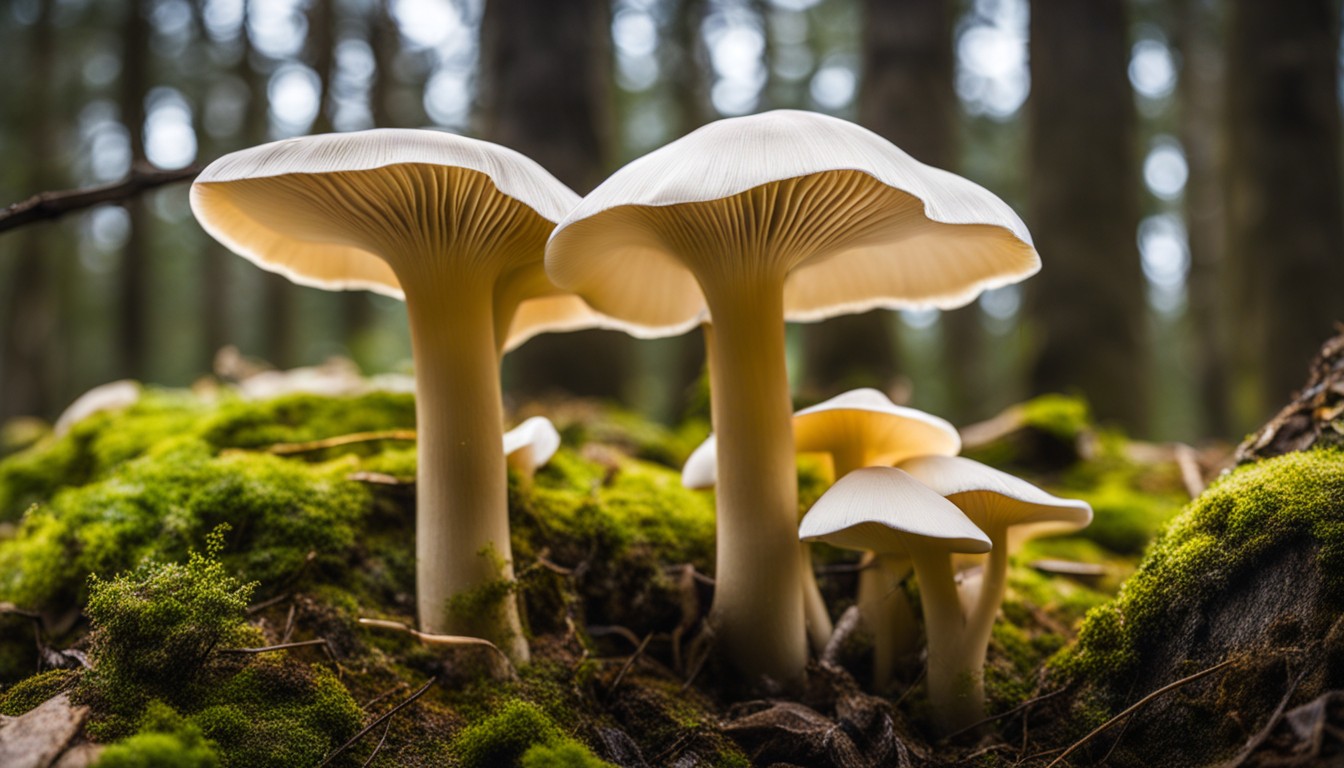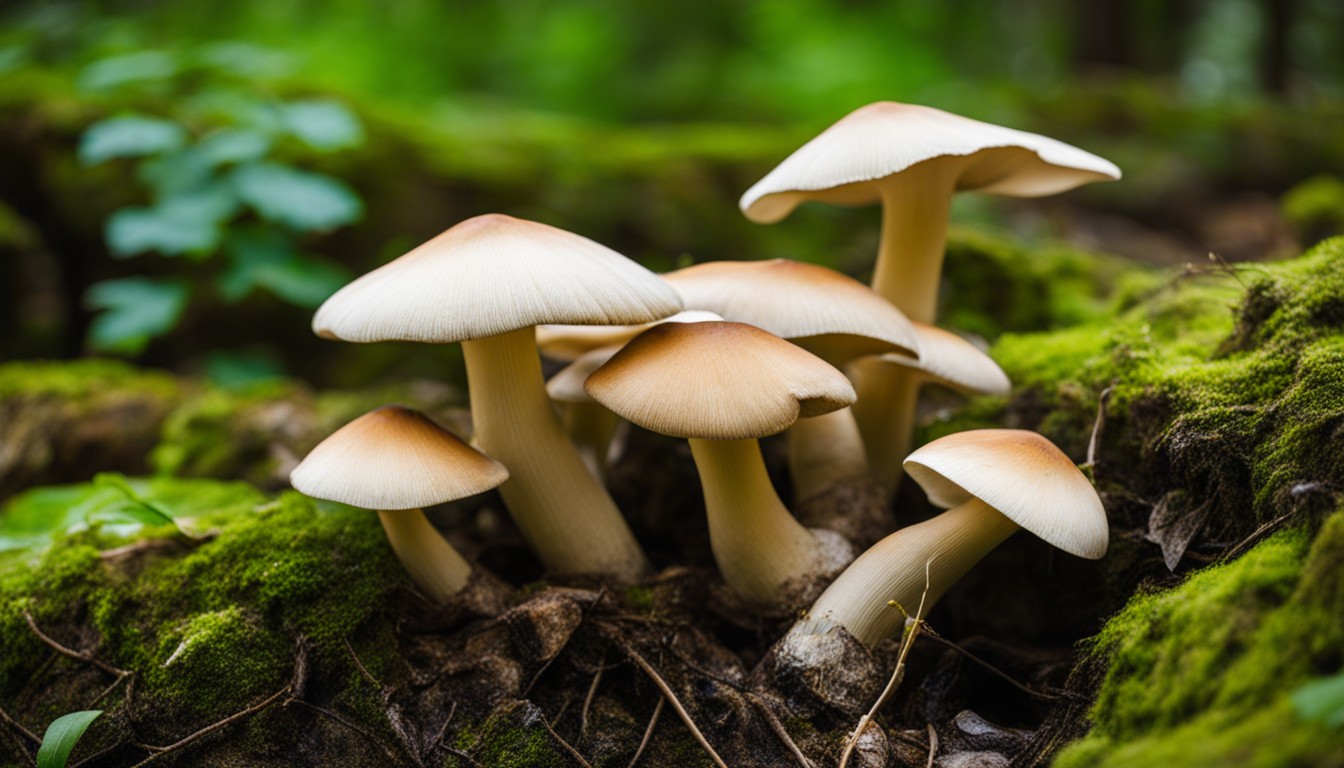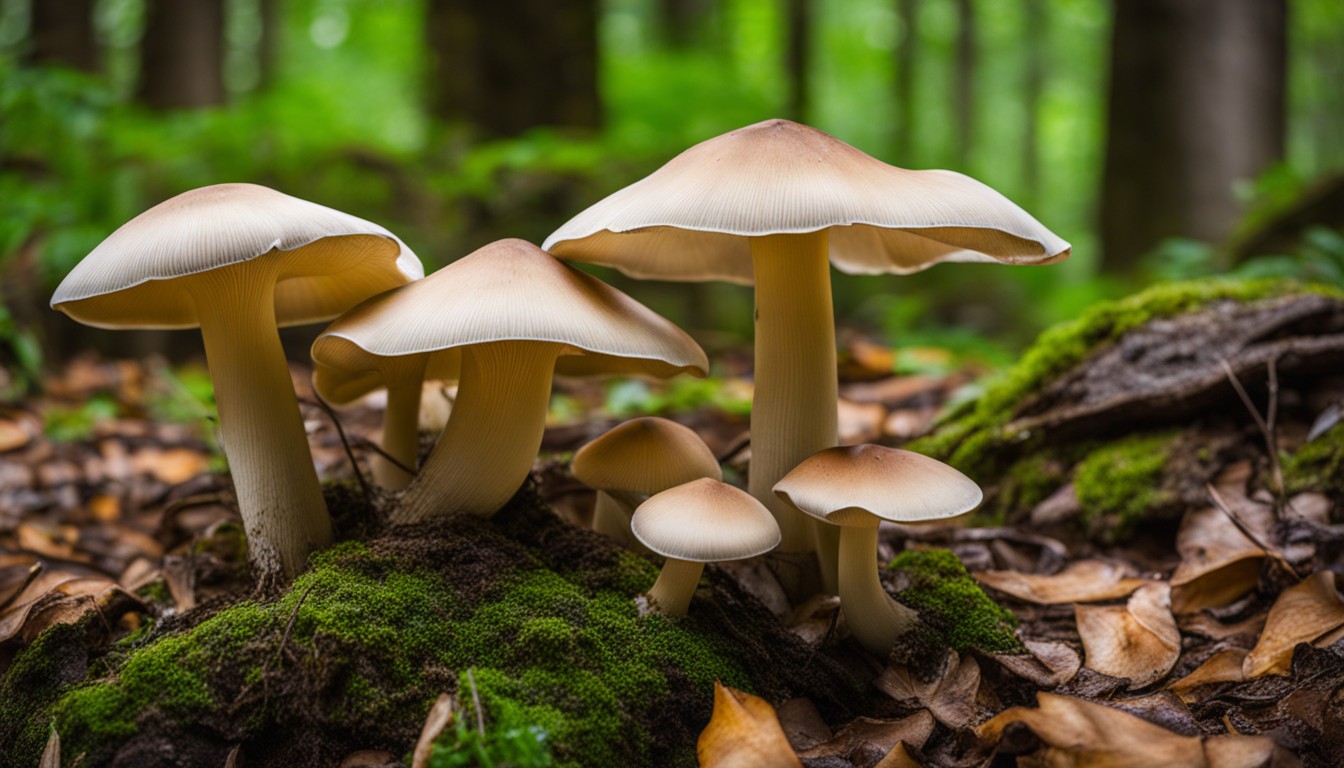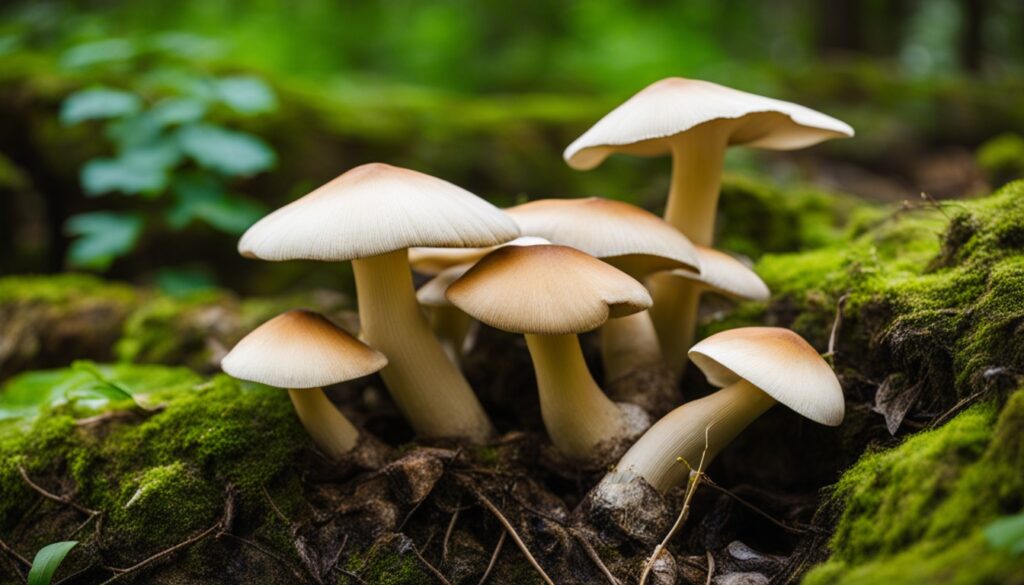Welcome to the comprehensive guide on mushrooms of Oklahoma! In this detailed and informative blog post, we will explore the diverse range of mushrooms that can be found in the beautiful state of Oklahoma. From the towering forests to the hidden corners of the prairies, Oklahoma offers a rich habitat for various mushroom species to thrive. Whether you are a seasoned mushroom forager or a curious nature enthusiast, this guide will provide you with valuable insights into the fascinating world of mushrooms in Oklahoma. So grab your hiking boots, join us on this educational journey, and discover the wonders of the mushroom kingdom right here in Oklahoma!
Overview of Oklahoma’s Mushroom Species
Diversifying one’s knowledge of the amid landscapes of Oklahoma goes beyond the rolling hills and valleys; it delves into the intricate world of native fungi. From the nutritious edibles to the rare and endangered, Oklahoma’s mushroom species offer a fascinating study.
Sorting out the numerous types of mushrooms in Oklahoma requires an eye for detail and an appetite for discovery. Distinguishing between the edible, medicinal, poisonous, and commonly mistaken species, it enhances our understanding of this remarkable segment of biodiversity.
Edible Mushrooms in Oklahoma
Mushroom enthusiasts relish the diverse oklahoma-grown flavors in the many edible species native to the region. From the aromatic Chanterelle to the rare and delectable Morel, the state’s varied ecosystem provides mushroom foragers a rich harvest of fungi delights.
- Chanterelle mushroom – Noted for its apricot-like aroma
- Morel mushroom – Revered for its nutty, meaty taste
- Pecan mushroom – Distinct for its unique, nutty flavor
- Chicken of the Woods – Appreciated for its poultry-like texture and flavor
- Lion’s Mane mushroom – Recognised for its seafood-like features
- Shaggy Mane mushroom – Identified by its inky cap and a gentle flavor
- Black Trumpet mushroom – Known for its rich, smoky taste
Poisonous Mushrooms to Avoid
Paying careful attention to mushroom identification is crucial in Oklahoma, as several poisonous species lurk amidst the edible ones. Incorrect identifications not only spoil meals but can lead to severe health complications.
- Witch’s Hat (Hygrocybe conica): Frequently confused with edible wax cap varieties, this red to orange mushroom turns black with age or upon handling.
- Death Cap (Amanita phalloides): A deadly poisonous mushroom often mistaken for edible puffballs during its button stage.
- Destroying Angel (Amanita bisporigera, A. virosa, A. verna): These ominously named species are as dangerous as they sound, appearing similar to some edible mushroom species.
- False Morel (Gyromitra esculenta): It closely resembles the sought-after true Morel, but is highly toxic and can be fatal if consumed.
Medicinal Mushrooms Found in Oklahoma
In the diverse land of Oklahoma, there are several medicinal mushrooms that make the region nothing less than nature’s pharmacy. These fungi offer benefits beyond edibility, ranging from boosting immune function to promoting brain health.
- Reishi: Known for its immune-boosting properties and potential to improve brain function
- Inky Cap mushroom: Traditionally used for its anti-inflammatory and detoxifying properties
- Cordyceps: Famed for improving athletic performance and boosting energy
- Turkey Tail: Renowned for supporting gut health and enhancing immune function
- Shiitake: Used extensively in traditional medicine for its cardiovascular benefits and immune enhancing properties
- Chaga: Celebrated for its antioxidant properties and potential to lower blood sugar levels
Commonly Mistaken Mushrooms
In Oklahoma, numerous mushroom species show striking resemblance to each other, leading to unfortunate cases of mistaken identities. Unraveling this complex net of lookalikes, this guide introduces the most commonly confused mushrooms of Oklahoma, aiming to debunk misinterpretations and enhance accurate identification.
- Amanita virosa often mistaken for Agaricus campestris
- Deadly Galerina mistaken for edible Honey Fungus
- Poisonous Clitocybe dealbata confused with Marasmius oreades
- Toxic Jack O’Lantern mistaken for Chanterelle mushrooms
- Poisonous Panter Cap mistaken for the edible Blusher
- False Morels often mistaken for True Morels
Rare and Endangered Mushrooms
In Oklahoma, rare and endangered mushrooms play a crucial role as guardians of the ecosystem, contributing to biodiversity and forest health. This guide delves into Oklahoma’s hidden gems, offering insight into these fascinating fungi species.
- The Climbing Hygrophorus: This white mushroom is often found clinging to the bases of trees, and it has gills that freely attach to the stem.
- Oklahoma Lepiota: Known for its rusty orange cap and slim stem, it’s one of the rarest species in the state.
- The Snuffbox Earthstar: This rare puffball mushroom is known for its distinctive star shape, typically seen in forested areas.
- Curtis’s Helmet: Named for its helmet-like appearance, it’s often found on the forest floor near decaying wood.
Identifying and Harvesting Mushrooms

On inspecting mushrooms found in Oklahoma, keenly look at distinguishing features such as stem, cap, gills, spores, and smell, because even a small difference can signify a dissimilar species, some of which may be dangerous. When harvesting, displaying consideration to the environment is paramount; only pick fully grown mushrooms, avoid trampling on the nearby flora, and never uproot the entire fungus – leaving a portion allows for future growth.
Characteristics to Look for in Edible Mushrooms
When dining on wild delicacies, it’s crucial to understand the key traits of edible Oklahoma mushrooms. From their spongy undersides to their distinctively rich, earthy aromas, these mushrooms exhibit characteristics that distinguish them from their toxic counterparts.
Edible Oklahoma mushrooms, easily recognized by their spongy undersides and earthy aromas, offer unique taste experiences, from nutty to sweet, charming gastronomes across the wilderness.
The unique characteristics of Oklahoma’s edible mushrooms encompass various elements. This can include their shape, color, gill structure, and spore print color. Recognizing these traits aids in safely indulging in these wilderness gastronomies.
Further notable features include the cap’s shape and texture, whether it’s convex, flat or bell-shaped. The taste and smell, predominantly nutty or sweet, set edible Oklahoma mushrooms apart, making them a gourmet’s delight in the wild.
Proper Mushroom Harvesting Techniques
In the act of mushroom foraging, the importance of ethical harvesting cannot be overemphasized. Maintaining a symbiotic balance ensures that Oklahoma’s diverse mushroom population continues to flourish. Reap mushrooms with care, observing not to uproot the mycelium (underground structure), and always leave enough specimens to propagate further growth.
Fostering awareness and respect for nature, mushroom foraging in Oklahoma should operate on a guiding principle of sustainable harvesting. When it comes to picking, twist and pull gently, avoiding any undue harm to the environment. The thrill of the harvest lies not just in the find, but in preserving the bounty of the land for future generations.
Tools and Equipment for Mushroom Hunting
In order to effectively forage for mushrooms in Oklahoma, various tools are essential to ensure efficiency and safety. These include a reliable field guide for mushroom identification, a sturdy basket for collecting, a soft brush for removing dirt, and a sharp knife for clean cuts.
Adventure undoubtedly awaits when mushroom hunting in Oklahoma, but proper preparation is key. Essential items such as comfortable, protective clothing, and GPS or a detailed map ensure a secure and successful hunting endeavor. High-quality waterproof boots will also keep you dry in all terrains.
Safety Precautions when Identifying Mushrooms
Ensuring safety during mushroom identification in Oklahoma is paramount. When navigating potentially hazardous areas, always carry a first aid kit and never forage alone. Knowledge of the lay of the land and its potential dangers can significantly reduce potential accidents.
Identifying mushrooms can be challenging, leading to lethal errors. Be aware of dangerous look-alikes, and don’t consume any mushroom you’re not sure about. A single mistake can lead to serious poisoning or even death.
Proper identification and understanding of local Oklahoma mushrooms are key safety measures. Learn from experienced local foragers or a fungal community to correctly identify edible, medicinal, and poisonous mushrooms.
Make sure to thoroughly cook all collected mushrooms to reduce toxicity. Respect the habitats of endangered species and harvest ethically. Also, always consult a professional or a guidebook before consumption to ensure you’re eating a safe variety.
Popular Mushroom Species in Oklahoma

Spotlighting the popular mushroom species in Oklahoma, a few standouts include the nutty Pecan Mushroom, the segmented Lion’s Mane, and the vibrant Chicken of the Woods. Each brings unique flavors and characteristics that lure in mushroom enthusiasts from far and wide.
In acknowledging the most common mushroom species in Oklahoma, we reflect on the aromatic Chanterelle, the earthy Shaggy Mane, and the distinctive Black Trumpet. These viable fungi hold an essential place in the state’s ecosystem and culinary scene.
The Delicious Morel Mushroom
Few culinary experiences equal the joy of uncovering an elusive Morel mushroom amidst Oklahoma’s lush landscapes. Distinguished by their unique honeycombed appearance, these heralds of spring are sought after by seasoned chefs and food enthusiasts alike.
Equally suited to an extravagant dinner or a hearty campfire meal, morels offer a tantalizing blend of tender texture and robust flavor. A hint of nuttiness combined with their uniquely rich earthy persona makes them a true gourmet’s delight.
In Oklahoma, Morels surface primarily during spring, gracing the kitchen tables with their coveted presence. They’re often found in moist environments, forest edges, and especially near sycamore and elm trees, their preferred mycorrhizal partners.
However, the joy of the hunt must be approached with caution. Despite being edible and delicious, Morels bear a resemblance to the poisonous false morel, which can cause serious health issues. Therefore, correct identification before consumption is paramount.
As one of Oklahoma’s cherished fungi, the Morel mushroom often stars in community festivals and local cooking competitions. Their rich and distinctive flavor has made them a sublime centerpiece of Oklahoma’s gastronomic culture.
The Nutty-tasting Pecan Mushroom
Considered a marvel of nutrition, the Pecan Mushroom (Agrocybe pediades) is a common find in Oklahoma boasting a delightful nutty flavor, appealing to both casual foodies and mycologists alike. It primarily thrives in rich and damp soils, manifesting a brown, white-spotted cap that aids amateurs in its easy identification.
The Pecan Mushroom’s distinct nutty and earthy flavor has found takers amongst culinary enthusiasts. It contains a rich assortment of nutrients including proteins, vitamins, and minerals, which makes it a desirable additive to wholesome cooking.
Although Pecan Mushrooms are quite common, proper identification is crucial to ensure a safe harvest. The practice of spore-printing fulfills this demand, confirming the light brown spore color typical for this species, and allowing the harvesters to avoid potential look-alikes.
The Vibrant Chicken of the Woods Mushroom
Painting Oklahoma’s forests with its vibrant hues of yellow and orange, the Chicken of the Woods mushroom is an enchanting sight. This vibrant forest dweller is renowned for its meaty texture and mild, chicken-like taste – a true testament to its name.
Found primarily on dead or dying hardwood trees, this fungus’ emergence signals the height of the mushroom-hunting season. Its vivid colors offer a stark contrast to its environment, making identification relatively straightforward for the seasoned mycologist.
Please bear in mind, while the Chicken of the Woods is generally safe to consume, individual reactions may differ. Therefore, a cautious approach to the initial tasting is advised. As always, consume only if absolute identification and freshness can be guaranteed.
In conclusion, Oklahoma’s vibrant Chicken of the Woods mushroom provides not only a visual spectacle but also a culinary delight for those fortunate enough to find it. Remember, respect nature, and enjoy the marvels it offers.
The Aromatic Chanterelle Mushroom
Deep within the forests of Oklahoma, the Aromatic Chanterelle Mushroom stands as a showstopper in the fungal flora. Known for its unique scent, it can be differentiated from others by its hints of apricots, mixed with an earthy fragrance.
These mushrooms grow in clusters near the base of trees, often found in the region’s deciduous forests. Its smooth, vase-like shape and golden hue make it a standout amongst the greenery.
Not only is the Chanterelle famed for its delightful aroma, it elevates various culinary dishes. Its fruity taste, paired with a mildly peppery finish, enhances many recipes ranging from soups to stews.
Oklahoma’s Chanterelle Mushrooms offer a delightful spectrum of aroma profiles. Their character and exceptional fragrance make them truly unforgettable.
It’s imperative to exercise caution during harvesting due to closely resembling poisonous mushrooms. Seek expert help if unsure, as the safety measures when handling and consuming unfamiliar mushrooms must never be overlooked.
The Segmented Lion’s Mane Mushroom
The Lion’s Mane mushroom, aptly named for its unique segmentation resembling a lion’s mane, exhibits a fascinating texture. Advanced tools like tactile sensors aid mycologists in Oklahoma tremendously, enabling them to measure the intricacies of this unusual species’s appearance.
Distinct from other mushroom species, the Lion’s Mane boasts a fetching cluster of spines instead of the traditional gills. Its bedding of cascading white spines, reminiscent of a proud lion’s glorious mane, captivates both novices and experts.
Capturing the essence of Oklahoma’s diverse mycological tapestry, the segmented Lion’s Mane mushroom is a sight to behold. It not only adds a touch of exotic hint towards the state’s mycobiota but its culinary and medicinal value also significantly contributes to its popularity.
Renowned for its seafood-like taste, akin to crab or lobster, the Lion’s Mane mushroom offers a gourmet experience. Proper cooking techniques, such as the low and slow method, bring out its mild, sweet flavor making it a beloved choice among Oklahoma chefs.
Of course, the Lion’s Mane mushroom’s unique segmentation isn’t just for show. Medical research shows potential for this Oklahoma native in supporting cognitive health. It’s thus not surprising to see it increasingly populating the shelves of health and wellness stores.
The Earthy Shaggy Mane Mushroom
Unveiling the Earthy Shaggy Mane Mushroom, this umbrella-like species is an emblematic figure in Oklahoma’s mycological population. It boasts a distinct architectural structure that exudes a sense of unusual elegance, captivating mushroom enthusiasts with its unique charm.
Indigenous to Oklahoma, the Shaggy Mane Mushroom delivers an inviting taste from the earth. Its flavor, colorfully described as mushroomy, fresh, and subtly sweet yet slightly meaty, encompasses different culinary spectrums making it a versatile choice for inventive cooks.
The Trumpet-shaped Black Trumpet Mushroom
Oklahoma’s Black Trumpet Mushrooms offer a unique blend of flavors. Once cooked, they deliver a rich, smoky taste and a pleasing umami character. Blended with regional ingredients, they present an unexpected note in both traditional and experimental dishes.
These mushrooms are a true natural resource. Sourced from the shady forests of Oklahoma, they’re harvested by hand ensuring the maturity and quality of every mushroom selected.
There’s something genuine about picking your food from the forest floor. The Black Trumpet Mushrooms are ready to eat right after they’re expertly harvested and gently washed. This provides a fresh, organic and sustainable option for the discerning cook.
Harvesting Black Trumpet Mushrooms is a labor of love, blending outdoor adventure with culinary delight. Once you find the forest’s hidden trumpet, it’s a short journey from the natural ground to the gourmet kitchen.
Mushroom Photography Tips

When capturing the mystic beauty of Oklahoma’s mushrooms, consider various angles and perspectives. Experiment with the camera settings to enhance colors and textures, thoroughly expressing the allure of these fungi. For beginners stepping into the world of mushroom photography, knowledge is key. Understand your camera, use natural light resourcefully, and experiment with different compositions to truly bring out the character of your fungal subject.
Best Lighting Techniques for Mushroom Photography
When photographing mushrooms, natural light plays a crucial role. By mastering the art of using sunlight to your advantage, you can beautifully highlight the textures and features of various Oklahoma mushroom species.
Overcast days often provide ideal conditions for mushroom photography. The diffused sunlight reduces harsh shadows and gives your images a vibrant yet balanced tone. This technique is particularly effective in showcasing the intricate details of fungal structures.
Reflectors and diffusers can be used to enhance the quality of light. Use reflectors to bounce sunlight into shadow areas, and diffusers to soften harsh light. This will help illuminate your subject uniformly, capturing the true essence of your mushroom.
Consider shooting at different times of the day to experiment with various light conditions. Early morning or late afternoon, known as golden hours, often offer warm, diffused light that can add depth and drama to your images.
Composition and Framing Tips for Mushroom Photography
Capturing a compelling portrait of a mushroom is all about leveraging composition. Found low to the ground and often in clusters, they make ideal subjects for close-up photography. Favor a lower-angle shot for an impactful view that highlights the unique details and colors of the fungi.
While framing your shot, imagine a grid overlaying your scene. Use the rule of thirds: place the mushroom at the intersections of the grid lines. This technique creates balance, allows for movement, and makes the image more appealing.
Your frame must account for the whole life cycle of a mushroom. From the emerging spore to the mature cap, various stages of a mushroom’s life can create unique patterns and detailed textures, offering a new perspective every time.
Negative space or ‘breathing space’ around your mushroom subject is key. This ensures that your mushroom does not feel crowded and emphasizes its shape and form. Use this space to include surrounding elements like foliage, soil, and other natural elements.
Don’t be afraid to experiment with perspectives and angles. Take a series of shots from different views and then select the photograph that captures the essence and individuality of the mushroom you’re photographing. Each mushroom possesses its unique style and framing them thoughtfully can bring these features into full play.
Frequently Asked Questions
Intriguing Biodiversity: Exploring Native Mushrooms of Oklahoma
1. What makes the mushrooms of Oklahoma unique?
The native mushrooms of Oklahoma boast an incredible diversity of species, each with its own distinct characteristics and flavors, making them a treasure trove for mushroom enthusiasts and culinary explorations alike.
2. Can I forage for mushrooms in Oklahoma?
Yes, you can forage for mushrooms in Oklahoma, but it is essential to have a thorough understanding of mushroom identification and safety guidelines. Remember to respect the environment and obtain any necessary permits or permissions before foraging.
3. Are there any poisonous mushrooms in Oklahoma?
While Oklahoma is home to some poisonous mushrooms, proper identification and knowledge are key to safely enjoying the state’s fungal biodiversity. It is strongly advised to consult with an experienced mycologist or join a local mushroom club for guidance on mushroom identification.
4. Which mushroom species are commonly found in Oklahoma?
Common mushroom species found in Oklahoma include the morel, chanterelle, chicken of the woods, oyster mushroom, and various boletes. However, the state is also home to lesser-known species that contribute to its unique fungal ecosystem.
5. How can I incorporate Oklahoma mushrooms into my cuisine?
Oklahoma mushrooms offer a variety of flavors and textures that can elevate your culinary creations. From sautéing and grilling to adding them in soups, stews, or as a topping for pizzas, the possibilities are endless for incorporating these native mushrooms into your dishes.
6. Are there any guidelines for sustainable mushroom foraging in Oklahoma?
To ensure the sustainability of mushroom populations in Oklahoma, it is essential to follow ethical foraging practices. These include only collecting mature mushrooms, leaving some behind to disperse spores, and avoiding damage to the mycelium or surrounding habitat.
7. Where can I learn more about mushrooms in Oklahoma?
For further information on mushrooms in Oklahoma, consider reaching out to local mycological societies, attending workshops, or exploring reputable online resources that offer detailed insights into the state’s fungal diversity. Remember, ongoing learning and collaboration with fellow enthusiasts can deepen your appreciation for Oklahoma mushrooms.
Conclusion
In conclusion, our excursion through the rich fungal terrain of Oklahoma must end. Yet, the exploration of the state’s many mushroom species remains an ongoing endeavor, enlightening the curious and enhancing gastronomic adventures.
- Remember the characteristics of edible mushrooms
- Practice safety precautions during mushroom hunting
- Note the distinct features of popular mushroom species
- Apply proper lighting and framing for mushroom photography

